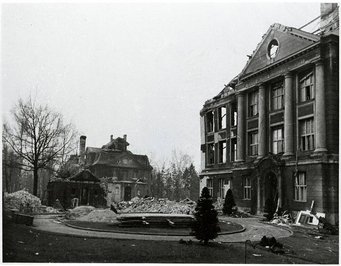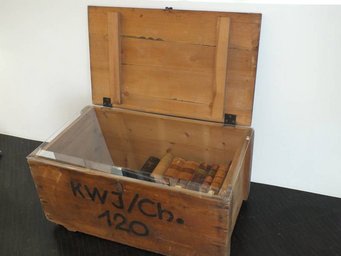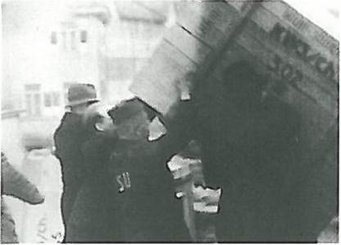Upheaval
Station 3
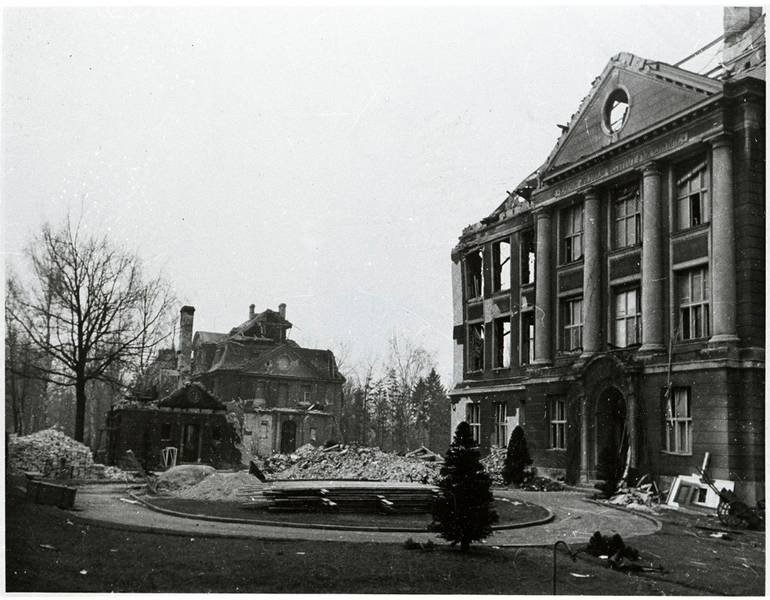
Much of the Kaiser Wilhelm Institute for Chemistry, including Otto Hahn’s study, was destroyed in the night air raids of 16 February 1944. What remained of it was moved to textile factories in Tailfingen, Baden-Württemberg.
Having been spared the ravages of war, the Swabian Alb was chosen as a site for relocation because the physicist and Nobel laureate Werner Heisenberg had already moved to the nearby locations of Haigerloch and Hechingen along with the Kaiser-Wilhelm Institute for Physics.
Otto Hahn was arrested by the Americans in Tailfingen, part of what is known today as Albstadt, in April 1945. The Americans wanted to find out just how far German research into developing a nuclear bomb had advanced. Hahn remained interned in England along with other German nuclear scientists until January 1946. He only returned a few times afterwards, having been released in Göttingen in the British occupation zone in 1946, while Tailfingen was situated in the French zone. Hahn was appointed founding director of the Max Planck Society in 1948.
After Hahn’s departure, Fritz Straßmann (1902–1980) headed the Radiochemical De-partment until 1953. He carried on the work that was started in Berlin and continued in Tailfingen and organized the relocation to Mainz. Josef Mattauch was appointed to succeed Lise Meitner as head of the Physics Department. Under his leadership, the Institute relocated for a second time at the end of the 1940s. At the request of French occupying forces, the newly founded Max Planck Institute for Chemistry, as it was then called, was moved to Mainz University campus in 1949.
Packed Research
Exhibits: Box KWI/Ch. 120; filled with wood wool and Hahn’s old measuring instruments
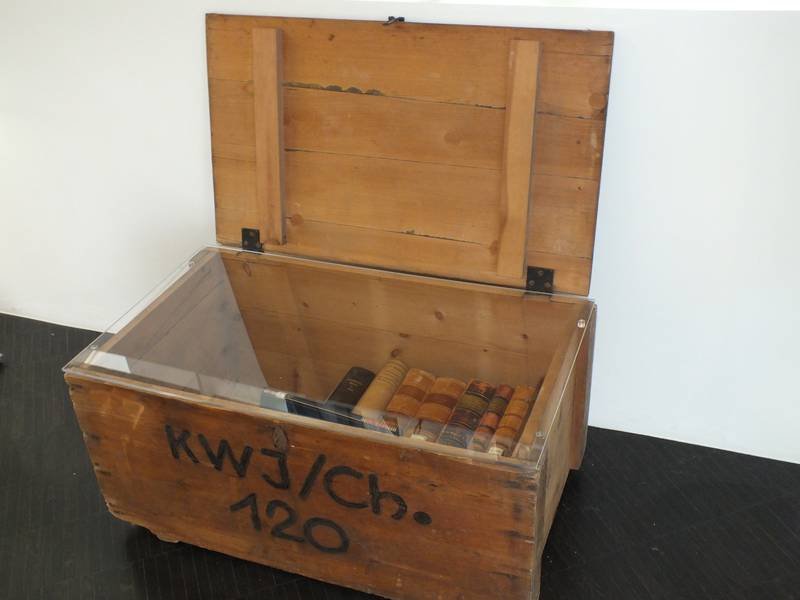
In the spring of 1944, the Kaiser Wilhelm Institute for Chemistry moved from Berlin-Dahlem to Tailfingen with a staff of about 50. The move was organized by Hans Götte, a colleague of Otto Hahn. With the exception of the high-voltage generators still under construction, the entire inventory was packed in wooden crates and transported to the Swabian Alps. There the departments occupied parts of three textile factories. In January 1944, Speer’s Reich Ministry of Armaments and War Production (Reichsministerium für Bewaffnung und Munition) approved a sum of 30,000 Reichsmarks for the necessary relocation modifications. Soviet prisoners of war had to help with the move.
Research continued in Tailfingen with limitations. Due to the war, materials became scarce.
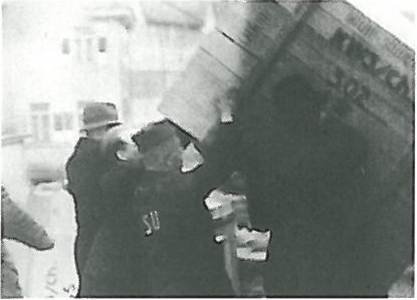
As early as 1946, Fritz Strassmann began planning the move to Mainz. One year later, the transport of the high-voltage generator and other instruments from Tailfingen to Mainz was initiated. The particle accelerator was put into operation in 1949 under the direction of Fritz Straßmann and Arnold Flammersfeld.
However, the actual move from Tailfingen to Mainz did not take place until the first half of 1949.
